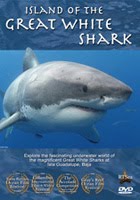 There are places throughout the world that can serve as both a unique oasis of ecological development and a microcosm of the world as a whole. The Galapagos Islands are an archipelago of volcanic islands off the coast of Ecuador that fit that description to a tee. First brought to worldwide attention by Charles Darwin's studies during his 1835 expedition, the islands have been a source of fascination with scientists and, more recently, tourists.
There are places throughout the world that can serve as both a unique oasis of ecological development and a microcosm of the world as a whole. The Galapagos Islands are an archipelago of volcanic islands off the coast of Ecuador that fit that description to a tee. First brought to worldwide attention by Charles Darwin's studies during his 1835 expedition, the islands have been a source of fascination with scientists and, more recently, tourists.The islands' uniqueness is a result of their isolation, producing endemic species and acting as a perfect laboratory for the study of natural development and the relationships that intertwine to produce healthy marine and terrestrial ecosystems. The islands are known for their marine
 iguanas, Galapagos tortoises, and several species of birds - including the only tropical penguin, the Galapagos penguin - just to name a few.
iguanas, Galapagos tortoises, and several species of birds - including the only tropical penguin, the Galapagos penguin - just to name a few.To preserve some of that uniqueness, the Galapagos Marine Reserve (GMR) was established in in 1986, covering over 70,000 square miles of surrounding ocean, one of the largest marine reserves in the world.
However, the more troubling and challenging side for the Galapagos is the islands' role as a microcosm of the world: an ecosystem threatened with the imprint of man. From a growing island population and tourism industry to invasive plant and animal species to illegal fishing within the reserve (often for sharks or sea cucumbers to satisfy a demanding Asian market), the Galapagos Islands are besieged from all directions. Island agencies, struggling with limited resources, must turn to outside conservation organizations for support.
One such organization that has taken a special interest in the Galapagos Islands is WildAid, based in San Francisco. Often working in conjunction with other conservation groups, WildAid has been closely involved in the monitoring of fishing boat activity, finding illegal fishing for shark fins and sea cucumbers taking place under the guise of boats supposedly only passing through the GMR. Last year, the ability to monitor boat activity was improved with the installation of a satellite-based vessel monitoring system. WildAid was also instrumental in bringing sniffer dogs to the islands several years ago, trained to smell not only drugs but shark fins and sea cucumbers.
 But while enforcement is an important part of conservation, it is equally important to tackle the root, or roots, of the problem. And in that regard, WildAid has worked with several agencies to help island locals with changing their personal economies away from poaching and abusing their natural resources, assisting them with building more sustainable activities. WildAid's efforts towards alternative incomes garnered the organization the UNDP Equator Prize in 2007.
But while enforcement is an important part of conservation, it is equally important to tackle the root, or roots, of the problem. And in that regard, WildAid has worked with several agencies to help island locals with changing their personal economies away from poaching and abusing their natural resources, assisting them with building more sustainable activities. WildAid's efforts towards alternative incomes garnered the organization the UNDP Equator Prize in 2007. Realizing the impact of the online world, WildAid has worked in conjunction with Good Egg Studios to develop Elf Island Virtual World, where kids of all ages can participate in interactive online game play to track and protect threatened sharks of the Galapagos Islands, thereby learning what is being done and what they can do to preserve these endangered species. The game company merged with Xeko.com recently, expanding their nature and conservation slate of online gaming.
There are other organizations like WildAid, ones that walk the talk, that provide tangible results and are truly making a difference. When you consider showing your support for any conservation organization, understand that they are all well-intentioned but in the final analysis there must something solid backing them up - good words supported by good deeds.

















2 comments:
I love that place!!
The last 2 years I did some Ecuador Galapagos tours and I have to admit it's one of the most beautifull places I've ever been!
Hope we can take care of it
The folks at WildAid would certainly agree with you!
And Dr. Sylvia Earle's Mission Blue foundation (www.mission-blue.org) has the Galapagos listed as an ocean "Hope Spot" - a location the organization plans to highlight to increase public awareness.
Post a Comment